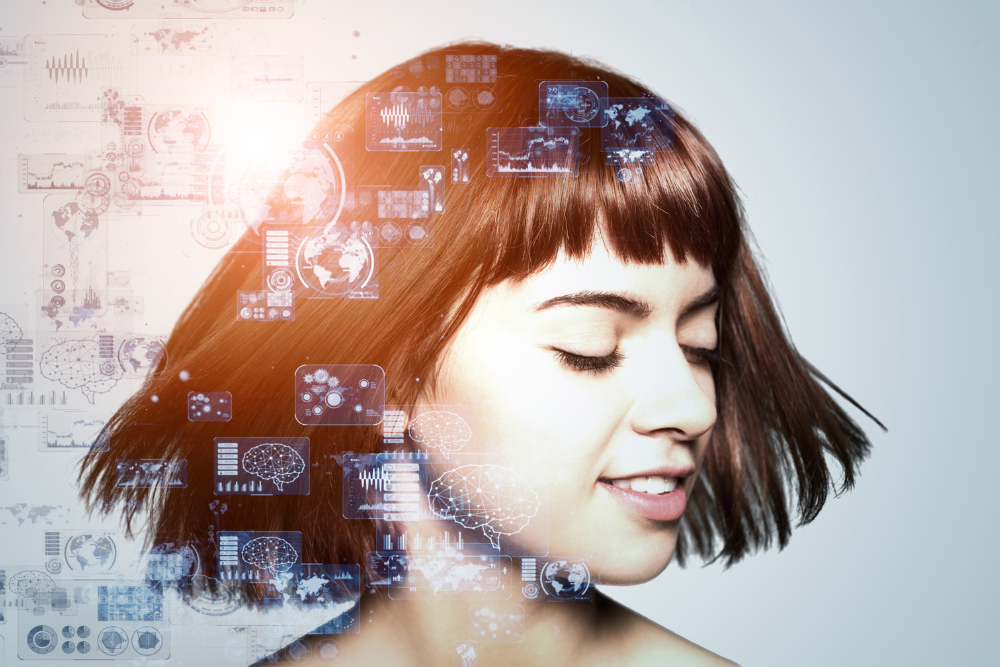Artificial intelligence (AI) has become a captivating topic, revolutionizing various aspects of our lives. As technology giants push the boundaries of AI, we enter a new era of possibilities, akin to a teenage-esque phase of exciting exploration and rapid growth.
In this landscape, we discover some exciting latest releases of AI-based products and updates making waves in the tech world, from effortless app creation to invaluable AI extensions. These innovations promise to enhance productivity and creativity beyond imagination.
While AI serves as a powerful brainstorming tool, it’s essential to understand its limitations and maintain a human touch in crafting compelling content. Recognizing AI for what it truly is – whether advanced algorithms or cognitive computing – helps us appreciate its value without unrealistic expectations.
As AI continues to evolve, striking a balance to avoid overdependence becomes a crucial consideration. The future holds endless potential, and navigating this phase with thoughtful exploration is key.

Table of Contents
AI’s Teenage Phase: Exploring Boundless Potential
Is artificial angst on the table as AI tech matures? Maybe not quite. But coming to understand AI is still young, yet in its teenage phase serves to capture the dynamic and transformative nature of artificial intelligence and implications for AI development’s impact on various aspects of society.

Rapid Growth & Exploration
Similarly to when humans experience rapid physical and psychological growth in youth, AI is currently undergoing a phase of rapid advancement, driven by breakthroughs in machine learning, deep learning, and neural networks. This phase is marked by an exploration of AI’s capabilities, pushing the boundaries of what it can achieve.
Implications: AI’s exploration leads to significant improvements in natural language processing, computer vision, speech recognition, and other domains. This transforms interactions with technology and enables innovative solutions in diverse industries.
Learning from Experience
Teenagers learn from their experiences, both successes, and failures, as they navigate the complexities of life. Similarly, AI systems learn from vast amounts of data, iteratively improving their performance based on feedback and real-world interactions.
Implications: AI’s learning from data enables it to adapt, improve accuracy, and handle complex tasks effectively over time.
Identity & Personality Development
During adolescence, individuals start to form their identities and develop distinct personalities. In the case of AI, we see the emergence of specialized AI models tailored for specific tasks and industries.
Implications: During its teenage phase, AI witnesses the emergence of domain-specific models like GPT-4 for language processing, vision transformers for computer vision, and reinforcement learning algorithms for game-playing. Each AI model develops a distinct personality, specializing in its domain’s capabilities and limitations.
Challenges & Uncertainties
Teenagers face challenges, uncertainties, and ethical dilemmas as they navigate their transition to adulthood. Similarly, AI confronts challenges such as algorithmic biases, ethical considerations, and concerns over job displacement.
Implications: The teenage phase of AI raises ethical questions about its use, data privacy, and fairness. Addressing these challenges is vital for responsible AI development and deployment as it becomes more integrated into society.
Responsibility & Guidance
While not quite fully developed, individuals require guidance and mentorship to make informed decisions and navigate the complexities of life. Similarly, AI development demands responsible practices and ethical guidelines to ensure that AI benefits society as a whole.
Implications: Key stakeholders must responsibly guide AI’s evolution by implementing ethical frameworks, transparency, and accountability to maximize its positive impact on society and avoid negative consequences.
The Journey Towards Maturity
The teenage phase is a transformative journey towards adulthood, where individuals gain wisdom and maturity. Similarly, AI’s teenage phase represents a significant step in its journey towards achieving more advanced and sophisticated capabilities.
Implications: AI’s growth promises transformative applications in healthcare, education, climate change, and social welfare. But it requires ongoing research, collaboration, and ethical considerations for humanity’s benefit.
Just like adolescents, AI is experiencing rapid growth, exploration, and the formation of its unique identity. Understanding this metaphor helps us appreciate the potential and challenges of AI development, emphasizing the need for responsible stewardship as we guide cognitive computing towards a more mature and impactful future.
Exciting New Products: Latest Releases in AI

ChatGPT Plugins
The Appy Pie App Builder – Effortless App Creation
Appy Pie has produced an exciting innovation – the first-ever app builder plugin for ChatGPT users, enabling effortless creation of Android and iOS apps directly from text input.
Developing a mobile app used to demand advanced programming skills and substantial resources. However, with Appy Pie App Builder revolutionizing the process, it’s now convenient and accessible to all.
With this plugin, users can bring app ideas to life by simply describing them in text. GPT-4 works its magic, converting descriptions into fully-functional mobile applications instantly. Users can then customize, test, and launch their apps using the user-friendly Appy Pie App Builder platform, known for its intuitive drag-and-drop functionality.
AI Extensions – AI Begetting AI
The AI Extensions plugin is a valuable tool designed to assist developers in building GPT-4 plugins more effectively. It offers step-by-step guidance and visual aids, making the process of crafting AI extensions more accessible and straightforward.
Specifically tailored to help developers create GPT-4 plugins with ease, it covers essential aspects, such as understanding the process and file structure, converting logic into API endpoints, creating Repls on repl.it, generating ai-plugin.json and openapi.yaml files, and navigating the installation process.
With the aid of clear instructions and visual images, the AI Extensions plugin aims to enhance the understanding of each step, making it suitable for both beginners and experienced developers alike.
The AI Extensions plugin is an excellent addition to any developer’s toolkit, as it simplifies the process and empowers them to create exceptional GPT-4 plugins quickly.
Updates
ChatGPT-3.5/4 – Today
Speaking of GPT, just today, I logged into it to find that some updates have been underway.
This reminds me of opening up Google Docs these days and being greeted with the “✨✏️Help me write” tool (which, when you use, offers you easy-to-click options like “Elaborate” or “Shorten.”
Granted, in ChatGPT, you merely have to type in these commands. However, to stay on the edge, having some convenient and easy buttons for common requests would go a long way to user accessibility. Additionally, it would create the framework as a placeholder for more intricate command buttons in the future.
Moving back to GPT, for kicks, I asked it if my interpretation of AI being in its teenage form from a paragraph in the “Impact on Work” section made sense, the below buttons populated to further my options on the subject:
Literally yesterday, I was using ChatGPT for something, and this feature was not populating. It’s interesting to see, as the whole idea that sparked the creation of this particular blog was because having these smart generation recommendations was something that I found myself looking forward to possibly seeing soon.
ChatGPT-5 and More – Tomorrow
OpenAI is back in the limelight with two major developments. First, they’ve filed a trademark application for GPT-5, the upcoming iteration of their renowned Generative Pretrained Transformer models. The application, submitted to the United States Patent and Trademark Office, indicates that OpenAI is already gearing up for the next leap.
In addition to this news, OpenAI has stirred excitement with their secret image generator. Still shrouded in mystery, this cutting-edge tool has been dubbed as ‘insane’ by the tech community due to its ability to produce astonishingly realistic images. Though details remain scarce, the buzz surrounding it hints at the potential for yet another game-changing innovation from OpenAI, suggesting that even more sophisticated language and image models are on the horizon.
Tired of hearing me swoon about ChatGPT? Luckily, there’s a lot more interesting things to talk about when it comes to new AI tech. Shall we, then?
Plus AI – Supercharge Your Google Slides!
Now for anyone who uses Google Slides and wants to make the best impression, Plus AI is a must-have tool that transforms your slide creation process with powerful AI capabilities. With it, you can generate engaging slides in less time, tailor content to your audience, and boost productivity.
You can start for free to get access to basic features. Upgrading gets you unlimited AI, advanced layouts, and more. Plus AI for Google Slides lets you create stunning presentations directly within the platform, leveraging the same AI technology that powers ChatGPT.
Bing Search & Chat – Dark Mode Launch
A gift for the eyes, Microsoft meets user demands with the launch of a dark mode for Bing Search and Bing Chat. This feature, found under “appearance” in search settings, is now accessible on desktops and works seamlessly with Chrome and Safari browsers. Bing users can also opt to follow their system settings for dark or light mode.
Latest Releases
Jounce AI – Free AI Copywriting & Imagery Creation
In the pursuit of supercharging content creation processes, Jounce AI is here to claim to revolutionize them with cognitive computing tools. Powered by AI and designed to be user-friendly, it aims to save you time by generating copy and artwork efficiently (which, for one, I am still on the fence about).
With its native content templates, automatic formatting, spell check, and grammar correction, Jounce seeks to streamline the creation and editing of marketing materials. They boast over 70 templates to choose from, catering to various content needs, from social media posts to website content and email campaigns.
As with any new technology (especially AI), it’s essential to approach Jounce with a balanced perspective. While it may complement your marketing efforts, relying solely on AI-generated content might miss that unique human touch that sets your brand apart. However, by combining the power of AI with your creativity and expertise, you may find the perfect middle ground that maximizes efficiency without compromising on authenticity.
Healthcare
Docus – AI Powered Healthcare Platform
Concerned about that mole or low-grade headache you haven’t been able to get rid of for a week? Don’t Google yourself into medical oblivion – now, there is a healthcare-specific cognitive computing tool called AI Health Assistant. While this does not replace a real doctor, it sure takes out a lot of the guessing work and helps you figure out what next steps to take. What’s more, it tailors your search to help you find a real doctor in the US and Europe best suited to address your concerns.
Featured by the likes of Forbes and Entrepreneur, Docus is great for health management, medical consultation, and health management with both the Assistant and top doctors from 15+ countries. This Healthcare aid is doing more than good; it’s saving lives.
AWS HealthScribe – Automatically generated clinical notes (patient-clinician conversations)
Introducing the latest healthcare innovation! Last month, Amazon unveiled AWS HealthScribe. This cutting-edge AI tool is revolutionizing the way doctor-patient conversations are handled by providing seamless transcription and analysis services, streamlining healthcare documentation like never before. With its advanced capabilities, it efficiently extracts essential medical terms and accurately categorizes transcripts. Currently, AWS HealthScribe primarily focuses on supporting general medicine and orthopedics, but you can expect more specialties in the future.
Of course, some concerns have been raised regarding potential biases in generative AI. Data security is also a top priority and AWS HealthScribe is proud to be “HIPAA eligible,” ensuring the utmost privacy and compliance with healthcare regulations.
AWS HealthScribe significantly reduces documentation time, enhancing overall efficiency in medical scribe workflows. Additionally, patients will find it extremely user-friendly, thanks to the helpful consultation recaps it offers. With such a remarkable tool at our disposal, healthcare management has never been easier.
What We Think
Nik Stephney, Fullmoon’s killer senior digital strategist, sums up the overall sentiment of our team in her comment:
I’ve enjoyed using AI as a brainstorm tool. It’s allowed me to do more with less time and effort. That means I get to focus my energy on creativity which is most important to me.
As a brainstorming tool, AI can really jostle the creative juices loose. You can often specify the type of ideas you’d like to generate from silly to professional to futuristic, as long as you have a prompt or starting idea!
Impact on Work
Charles McDonald, our catch of a business strategist, outlines a few pros and cons for AI’s impact on work with through cognitive computing aids:
How has AI impacted my work? In a great way, I think. I’m happy to have the tools available.
Pros
-
- I think it’s made things quite a bit faster.
- Helps combat writer’s block.
- Great as an inspiration element.
Generally, I love it! But nothing is perfect. Here’re the cons.
Cons
-
- What you read is who you are, so the jargon and buzzword rich productions of chat AI can be detrimental.
- It’s not much less work than just writing or brainstorming “naturally.”
- AI in its current state requires a lot of engagement to “work” as it should and not sound “artificial.”
Overall it is a tool and should be used as such, it’s our job as marketers to keep up, and keep an edge. The ChatGPT rush is over and now there are other contenders growing in the space. Bard is making huge leaps in progress and there are a lot of niche players in the field as well.
I’m excited to see what the future looks like!
Emma Facchine, our cream-of-the-crop senior copywriter, is in agreement with her insights especially on ChatGPT:
AI has been an effective brainstorming tool, especially when I’m struggling with writer’s block. In many ways, it’s helped me work more efficiently and allows me more time to focus on creativity.
The biggest con I’ve noticed is how the responses often veer towards monotony, resulting in generic and repetitive writing that fails to capture the essence of effective copy. ChatGPT simply lacks a level of intuition and understanding which is paramount when you’re trying to connect with your audience, understand their pain points, or appeal to emotions. This is why human touch is crucial to keep copy from feeling impersonal or disconnected.
Overall, I don’t think there is anything I necessarily wish to “change” about AI. I think it serves as a great tool to generate ideas and inspiration, organize thoughts, and police grammar, but I never expect it to be used as an authoritative source of information complete with a personality.
The possibilities for AI truly seem inhumanly endless. However, we are in the very young stages of the technology, having graduated from its more rudimentary childhood since its conception and moving into the teenage “exploratory” era of capabilities, where I believe we find ourselves today. Now that AI has hit puberty and is starting to blossom, its prevalence and personality is growing more complex and starting to hone how to realize its potential.
Clearly Understanding, Utilizing & Communicating About “AI”
Wes Musgrove, our creative and digital marketing extraordinaire, has another thought:
What if we became more intimately tuned with what this blossoming technology truly is at its core through adopting accurate terminology?
The year is 2013.
YouTube is just getting started, and online communities are beginning to become a major part of the average American psyche. You are sitting in a coffee shop, listening to “Of Monsters and Men,” when you start to hear someone discussing an algorithm.
Soon, everywhere you look, there is talk of the algorithm. Everything is about building, training, and producing algorithms. You hear that soon it will solve all our mundane problems. Questions ranging from “What song should I play next?” to “Should this person get health insurance?” can be answered by an algorithm.
I particularly recall an algorithm that would analyze your LinkedIn contacts and then give you advice on how to communicate with them. It would even write emails and direct messages for you. Sound familiar? It should. It’s basically an older and less sophisticated version of ChatGPT (AI).
We all believed it for a while back in 2013: These algorithms were going to change our lives, and in large part, they did.
But outside of a few media applications, the algorithm is mostly invisible to the average consumer. Most of the algorithms that are truly important have very specific use cases and are mostly only useful to large companies where data is unwieldy, like insurance agencies. These are specific algorithms created for particular reasons for a unique cause. They are not the AI we all recall from “2001: A Space Odyssey.” And therein lies a selling opportunity.
What is my point? AI is just a word we are using to repackage the concept of an “algorithm” for mass market appeal.
It’s a marketing strategy.
These tools will inspire better tools, and those tools will probably be mostly used by niche industries as the development cost of these tools continues to mount. But they are just tools. Not a silver bullet, and not AI.
When these future tools are being sold to hospitals and software companies, they will not be called AI; they will be called tools, and we would all be wise to start doing the same!
For example, I used a grammar tool to make this sound more like someone literate wrote it.
Wes is looking beyond the traditional understandings of AI expectations. He highlights the misconception and hype surrounding the term “artificial intelligence” and its relation to algorithms. In essence, that AI is a rebranding of algorithms for marketing purposes.
Noting that so-called AI applications were, in fact, just algorithms designed for specific tasks and were not the sophisticated AI portrayed in science fiction movies like Sonny in iRobot, Musgrove’s got a point: these tools are useful but should be recognized for what they are – digital gizmos and not a magical solution to all problems.
In that regard, when discussing such technologies, should we refer to them as tools rather than continuing to misleadingly call them AI? Wes implies that these tools will continue to evolve and be utilized in various industries, but it’s essential not to overstate their capabilities by labeling everything as AI.
AI as Tools: Rebranding the Technology Terminology

Okay, so if we’re not going to call this realm of AI, what would it be? What terms better reflect the underlying technology behind smart tools without misleadingly suggesting human-like intelligence or consciousness?
There’s “machine learning,” but that is the backend processing and programming of the tools based on manual input and data collection.
Machine learning refers to the subset of AI that focuses on training algorithms to learn from data and improve their performance on specific tasks without being explicitly programmed. It is a more specific and accurate description of the technology that powers many of the smart tools we encounter today.
What about “advanced algorithms”? It’s a broader term that encompasses various sophisticated computational methods used to process data and perform specific tasks efficiently. It emphasizes the role of algorithms without necessarily implying human-like intelligence.
I’m partial to “cognitive computing” myself. This term feels like it’s referring to the use of computational models to simulate human thought processes, which powers some smart tools but without implying full human-like intelligence.
The AI Odyssey Continues
Whatever we call it, the technology of AI (or CC for cognitive computing) is inarguably here to stay, pending some ecological cataclysm or bio-apocalypse. Our responsibility is just to make sure we don’t become over-dependent on it and end up like the humans in Wall-E’s timeline.
AI has proven to be a valuable brainstorming tool, assisting content creators in generating ideas, combating writer’s block, and enhancing productivity. Its ability to produce various concepts based on given prompts is impressive.
However, it’s essential to recognize the limitations of AI in understanding human emotions and creating personalized content. Maintaining a human touch in content creation is crucial to connecting with the audience effectively. Striking a balance between AI-assisted brainstorming and human creativity will be key to maximizing its potential while avoiding overdependence on AI. As AI technology evolves, thoughtful exploration and integration will pave the way for its imminent applications.
What do you think the future holds as this technology matures into the next phase of its growth? Or, what would you like to see happen, and how can we make it so?
Other Digital Marketing News & Cool Stuff
PodPilot
There’s An AI For That
Actors vs. AI: Strike brings focus to emerging use of advanced tech
The Good, the Bad & the Ugly of AI: Is the Worker’s Biggest Frenemy ChatGPT?



